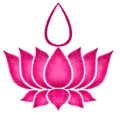This article needs additional citations for verification .(April 2010) |
This Thangal of Pambankulam was the seventh among the Primary Nizhal Thangals (places of worship). It is west of Kadambankulam in the Tirunelveli-Kanyakumari National Highway east of Panakkudy.
A thangal was constructed during the 'Desa-sanjara' of Vaikundar. It was called the Pattakasalai Pathi.
